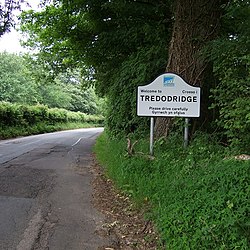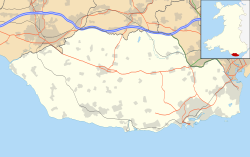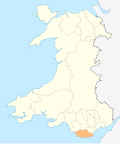| Tredodridge | |
|---|---|
 | |
Location within the Vale of Glamorgan | |
| OS grid reference | ST052773 |
| Principal area | |
| Preserved county | |
| Country | Wales |
| Sovereign state | United Kingdom |
| Postcode district | CF |
| Police | South Wales |
| Fire | South Wales |
| Ambulance | Welsh |
| UK Parliament | |
| Senedd Cymru – Welsh Parliament | |
Tredodridge (also Tre-Dodridge) is a hamlet in the Vale of Glamorgan within Wales. It lies along a country lane to the northwest of Pendoylan and southwest of Clawddcoch. It contains Brynteg House, rumoured to have once been occupied by James Somerset [1] The house, however. was built over 100 years after he came to the country. To the northwest of the hamlet is the Vale of Glamorgan Golf Club and Hensol Castle.


